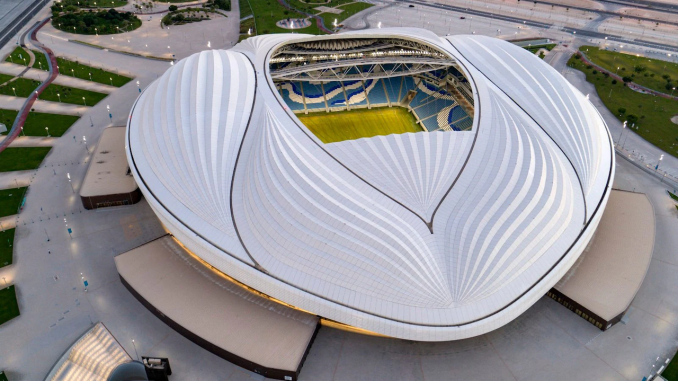
On Sunday, Nov. 20, the World Cup kicked off to great fanfare. The World Cup is undoubtedly the largest sporting event in the world, and this year’s tournament is being held in the nation of Qatar.
Qatar is a small nation located on the northeastern coast of the Arabian Peninsula in the Middle East. It shares its only land border with Saudi Arabia to the south, with the rest of its territory surrounded by the Persian Gulf. It has a population of 2.8 million people, but only about 300,000 people are Qatari citizens, while about 90% of the population is either expatriates or migrant workers, mostly from South Asia and Africa.
Qatar is one of the wealthiest countries in the world per capita (the measure of economic value produced by the country with the respect to the size of the population). This is because the country has immense oil and gas, and is one of the largest exporters of liquefied natural gas (LNG) in the world. In the last decade, the government of Qatar has seen hosting the World Cup as a strategic way to diversify their economy, as well as showcase their country on the world stage to play more of a geopolitical role in the region.
The process of awarding Qatar the right to host the World Cup began under dubious circumstances in 2010. Despite having almost no soccer infrastructure in the country to host the tournament, Qatar was awarded the right to host the tournament over established countries such as the United States, Japan, and Australia. Later investigations found evidence that Qatari officials offered to bribe FIFA officials to award Qatar the bid for the tournament.
After being awarded the bid, the Qatari state has spend an estimated $200 billion dollars to host the World Cup, building a range of new stadiums and hotels worth billions of dollars, along with a new metro system.
To build this infrastructure, Qatar relied on a workforce of heavily exploited migrants working in conditions that could be likened to modern-day slavery. An estimated 6,500 migrant workers died in Qatar during the process of building World Cup infrastructure. Many died as a result of health complications due to heat exhaustion, after being forced to work long hours in extreme heat, when average summer temperatures regularly exceed 100 F.
Many of these workers were recruited from poor countries such as Bangladesh, India, or Nepal to build the infrastructure. Upon arriving in Qatar, reports have shown that the government would confiscate the passports of foreign workers, and not allow them to leave the country if they wanted to escape the brutal conditions.
In addition to the extreme exploitation of migrant workers upon which this World Cup rests, hosting the World Cup has shined a light on Qatar’s reactionary social customs. Qatar is ruled by an extremely conservative regime which imposes strict Islamic social customs on the population. Women suffer extreme discrimination under “male guardianship” laws, which means women must gain permission from either their father, brother, grandfather or husband to exercise basic rights — including marrying, studying abroad, working certain jobs, and receiving various forms of reproductive healthcare. Having sex outside of marriage is punishable by a prison sentence of up to seven years, and beatings with a whip or a stick. And homosexuality is illegal in Qatar and punishable by up to three years in prison. And LGBTQ+ people are repeatedly targeted by Qatari security forces, and suffer frequent arrest and beatings.
While the World Cup is an incredible event that brings together humanity in a unique way, it is clear this tournament — like many large sporting events under capitalism — is a lavish spectacle built on the backs of the most exploited people on Earth.




